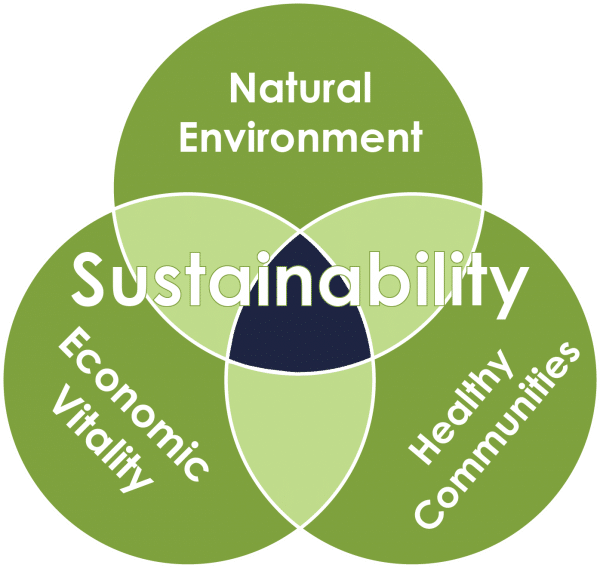Agile can be an effective tool within larger organizations, but additional strategies and techniques are required for successful implementation.
Managing multiple projects simultaneously is a challenging task. It requires an effective balance between meeting leadership’s expectations for visibility and maintaining the agility required for successful project execution. Agile is a popular project management technique used by many small to mid-sized businesses and teams. However, it is not as successfully applied for large-scale agile development. For enterprise level development, SAFe methodology may be a better choice.
The Difference Between Agile and SAFe Methodologies
Agile software development typically relates to a project management methodology or framework that promotes iterative software development, flexibility, and a focus on customer collaboration. The agile manifesto emphasizes customer collaboration over contract negotiation, individuals and interactions over processes and tools, working software over comprehensive documentation, and responding to change over following a plan. The Agile methodology is well-suited for small to mid-sized businesses, where there is more intentionality and ease of collaboration with customers and between internal teams.
Like Agile, SAFe (Scaled Agile Framework) promotes iterative delivery, flexibility, and customer collaboration but incorporates additional strategies to allow for large-scale agile development. In larger organizations, where there are multiple teams and stakeholders, often with competing priorities and requirements, this more robust approach to agile delivery is needed.
It is worth noting that regardless of an organization’s size, sometimes the culture may not be built for an Agile transformation. Achieving true agility requires time, thoughtful consideration, and dedication. When organizations commit to an Agile transformation and fully embrace it, the impact is apparent, influencing how they operate and conduct business.
Here are some key strategies for successfully implementing large-scale agile development.
Strategies for Successful Large-Scale Agile Development
1. Prioritize projects by importance and sequence based on dependencies and goals
To manage multiple projects efficiently, it is crucial to prioritize and sequence them based on their importance and deadlines. Start by identifying critical projects that require immediate attention. Next, determine if there are additional projects with similar goals or dependencies, making simultaneous development a strategic choice. Sequencing projects based on dependencies and goals helps create a roadmap for implementation, allowing teams to navigate complex interdependencies and allocate time and resources effectively.
2. Establish clear objectives and goals
Each project must have well-defined objectives and goals to promote focused efforts on specific deliverables. Clear objectives allow you to monitor progress and make necessary adjustments when required. Establish key performance indicators (KPIs), so you have measurable parameters on which to make an objective evaluation. Be sure to communicate these goals and KPIs to your team members to ensure everyone is aligned and working towards a common purpose.
3. Develop comprehensive project plans
Creating a detailed project plan is essential for any project, but the importance of outlining the scope, milestones, timelines, and resource requirements is compounded for large-scale agile development.
Comprehensive project plans that are shared among team members aid in managing tasks, resource allocation, and progress tracking. It also enables teams to proactively address potential risks and challenges. Integrating contingency plans into the project plan prepares teams for unforeseen obstacles, fostering resilience and adaptability.
4. Delegate responsibilities and empower team members
Distributing tasks among team members based on their expertise and strengths not only shares the workload but also empowers them. Once tasks are assigned, encourage autonomy to foster a sense of ownership, which often leads to increased productivity and accountability.
Establishing a culture of shared leadership ensures that each team member feels valued and contributes to the project’s success, enhancing overall team performance and morale. While you want team members to feel a sense of autonomy and ownership, you don’t want them to feel uninformed or isolated, so make use of regular check-ins to ensure everyone is on track.
5. Maintain open channels of communication
Transparent and frequent communication with your team, stakeholders, and leadership is crucial. Regular updates on project progress, challenges, and achievements ensure that everyone is informed, goals are aligned, problems are solved quickly and efficiently, and facilitates timely decision-making. This transparency fulfills leadership’s expectations for visibility.
6. Embrace agile project management principles
Adopting agile project management principles, such as Scrum or Kanban, can help you manage multiple projects while maintaining flexibility. By breaking down projects into smaller tasks and prioritizing them, development can focus on completing high-priority items first and allow for quick pivots, if needed.
For example, iterative development, which focuses on developing a product in strategic parts, allows for easier adaptations based on changing goals or requirements. Incremental delivery gives stakeholders and users the opportunity to test the product at strategic points in development to identify opportunities for improvement, resulting in higher satisfaction and adoption of the end product.
Breaking down projects into smaller tasks and prioritizing them enhances efficiency. Embracing agile principles such as continuous integration and continuous delivery ensures that teams can respond rapidly to evolving project needs.
7. Utilize project management tools and software
Leveraging project management tools and software streamlines processes. Tools like project scheduling software, task management systems, and collaboration platforms facilitate efficient communication, task tracking, and resource allocation. These tools enhance visibility, promote collaboration, and improve overall project efficiency, enabling teams to adapt to the evolving demands of large-scale agile development. Some industry leading suites that cover many of these tools include Azure Dev Ops and the Atlassian tool set including JIRA.
8. Regularly review and reassess project progress and goals
When implementing large-scale agile development, it is important to perform periodic project reviews to evaluate progress and ensure alignment with organizational goals and priorities. Things to ask when performing a project review are:
- Is the project progressing as expected? If not, identify where issues are occurring and work to fix them.
- Are there risk factors you can preemptively prepare for?
- Do all teams have the necessary resources to be successful?
This proactive approach will result in an end product that is likely to more than meet expectations.
9. Foster a culture of continuous improvement
In the dynamic landscape of large-scale agile development, fostering a culture of continuous improvement is paramount. You can do this by conducting retrospective project reviews after project milestones have been completed. Encourage teams to reflect on their processes, identify areas for enhancement, and implement changes accordingly. This iterative approach ensures that the organization remains adaptable and responsive to evolving challenges. Implementing feedback loops and promoting a mindset of experimentation contribute to a culture where improvement is not only welcomed but actively pursued.
10. Leverage Lean and DevOps principles
Incorporating Lean and DevOps principles further enhances large-scale agile development. Lean principles focus on minimizing waste and maximizing value, while DevOps emphasizes collaboration and automation across development and operations teams. Integrating these principles into the SAFe framework promotes efficiency and accelerates the delivery pipeline. Implementing DevOps practices such as continuous integration, automated testing, and continuous deployment enhances collaboration and reduces time-to-market.
SAFe Is an Effective Approach for Large-scale Agile Software Development
Effectively managing multiple projects in a large-scale agile development environment demands careful planning, communication, and the use of appropriate project management techniques. By prioritizing projects, setting clear objectives, and adopting agile methodologies like SAFe, organizations can successfully navigate the complexities of large-scale agile development while meeting leadership expectations for visibility. Maintaining open communication channels and utilizing project management tools are crucial for ensuring project success.
With these strategies in place, organizations can achieve efficient project management while accommodating the agile nature required for each individual project, ultimately fostering a culture of continuous improvement and adaptability. In the ever-evolving landscape of large-scale agile development, embracing a proactive and iterative approach ensures that organizations remain resilient and capable of delivering value in the face of dynamic challenges. By combining SAFe with Lean and DevOps principles, organizations can create a robust framework that not only manages multiple projects effectively but also promotes a culture of efficiency, collaboration, and continuous enhancement.
InfoWorks specializes in guiding organizations through the intricacies of implementing the Scaled Agile Framework (SAFe) and other agile methodologies. We bring a wealth of expertise in project management, process optimization, and cultural transformation. Let us partner with you to enhance your organizational agility, streamline project delivery, and foster a culture of continuous improvement. Contact us today to discuss how our consulting services can propel your organization toward success in large-scale agile development.





